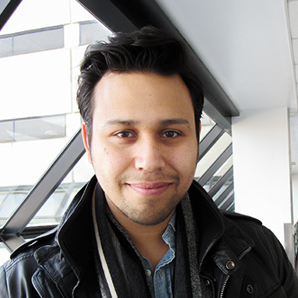Why did you choose graduate school at IUPUI?
Indiana University School of Medicine offers an environment where students and faculty alike are passionate about biomedical, clinical and translational research. The commitment this institution has to training future clinicians and scientific leaders in a collaborative culture was a major reason I chose IUPUI.
What has been your favorite academic accomplishment since you’ve been here?
My favorite academic accomplishments since I’ve been here have been my participation in two national conferences and my acceptance to the Yale Ciencia Academy. Within the first year of my Ph.D., I’ve had the opportunity to present a poster of my research and to represent the IBMG program for recruitment of prospective Ph.D. students. The Yale Ciencia Academy for professional development is an NIH-funded initiative that will complement my graduate training by connecting me with a diverse network of mentors and professionals to expand my professional growth and development. This recent accomplishment will also fund my next major national conference for training and will further enhance my exposure to current scientific research.
What do you enjoy most about life in Indianapolis?
Being from a larger city on the west coast, I enjoy having the perks of a big city in a smaller, intimate city. Living downtown grants the benefits of having a wide selection of fun places to go (such as restaurants and concert venues) within walking distance. The fact that I don’t have to worry about excessive traffic is a major plus!
Please provide some details about your work/research as a graduate student and/or any activities you are involved in.
My current research with Dr. James Williams and Dr. Tarek Ashkar involves the investigation and exploration of the renal papillae in the context of kidney stone formation. The goal of Dr. Williams’ and Dr. Ashkar’s labs is to elucidate the cellular mechanisms contributing to the formation of kidney stones, a common disease condition that is still only partially understood.


